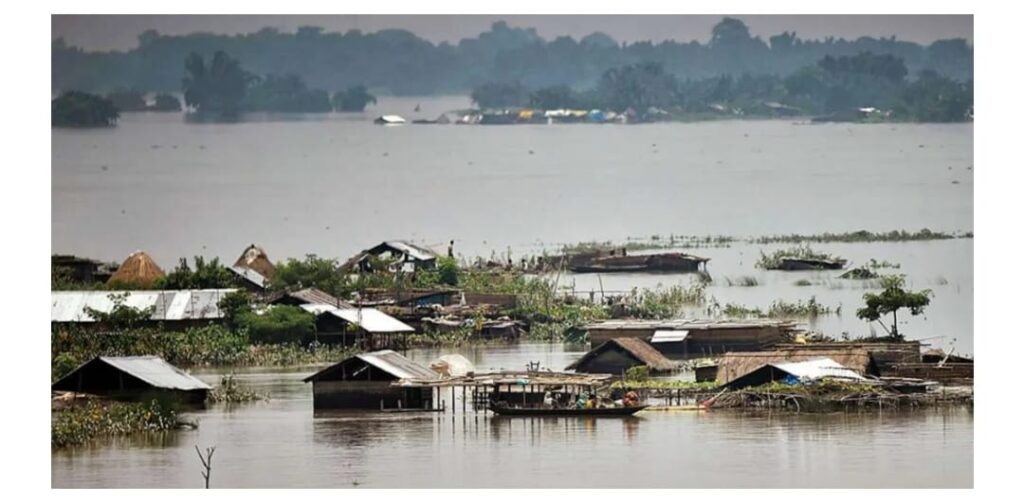Guwahati, Assam: The India Meteorological Department (IMD) has issued a red alert for several districts in Assam, signaling the likelihood of heavy rainfall and potential flood risks until June 22.
The IMD’s red alert serves as a warning to local authorities and residents to remain vigilant and take necessary precautions in the face of anticipated extreme weather conditions. While specific details regarding the affected districts are unavailable, it is crucial for residents in flood-prone areas across Assam to stay informed and prioritize their safety.
Given the seriousness of the situation, authorities urge individuals to rely on official sources of information such as local news channels, government websites, and emergency services for the latest updates and guidance. Prompt action in response to official instructions can greatly minimize the risks associated with flooding and ensure the well-being of affected communities.
During flood events, it is essential for residents to adhere to the following safety guidelines:
- Follow evacuation orders: If instructed or advised by authorities, promptly evacuate to designated safe locations or higher ground. Pay close attention to evacuation routes and instructions provided by emergency services.
- Avoid floodwaters: Refrain from walking, swimming, or driving through floodwaters, as they can be deeper and swifter than they appear. Floodwaters may also contain hazardous materials and pose serious risks.
- Seek higher ground: If you reside in low-lying or flood-prone areas, relocate to higher ground or upper floors of sturdy buildings to ensure your safety until the situation improves.
- Stay updated: Regularly monitor local news outlets, IMD bulletins, and other official channels for weather updates, flood warnings, and instructions from authorities. Having the most recent information will help you make informed decisions and take appropriate actions.
- Emergency preparedness: Assemble an emergency kit containing essential supplies such as non-perishable food items, potable water, flashlights, batteries, a first aid kit, and any necessary medications. Prepare for potential power outages and limited access to basic amenities.
- Maintain communication: Keep in touch with family members, friends, and neighbors to ensure their safety and exchange critical information. Establish alternative means of communication in case of disrupted phone networks.
It is crucial to prioritize personal safety and cooperate with local authorities and disaster response teams during such challenging situations. By adhering to official guidelines and preparing adequately, individuals can effectively mitigate risks and contribute to the overall resilience of their communities.


